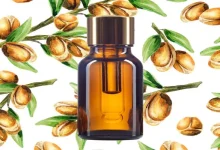Lavender oil, derived from the flowers of the lavender plant (Lavandula angustifolia), has long been celebrated for its diverse range of therapeutic properties. Its benefits extend into the realm of skincare, where it has garnered attention for its potential to enhance facial health. This article will explore the various ways in which lavender oil can be advantageous for facial care, touching on its properties, applications, and the underlying mechanisms through which it exerts its effects.
Introduction to Lavender Oil
Lavender oil is extracted through steam distillation of the lavender flowers, yielding a fragrant essential oil that has been utilized for centuries in aromatherapy, traditional medicine, and skincare. Its popularity in modern beauty regimes can be attributed to its natural compounds, including linalool, linalyl acetate, and various antioxidants, which contribute to its wide array of benefits.
Skin Benefits of Lavender Oil
1. Antimicrobial Properties
Lavender oil is renowned for its antimicrobial qualities, which play a crucial role in skincare. The essential oil contains compounds that exhibit antibacterial and antifungal properties, making it effective in combating various skin infections and conditions. These antimicrobial effects help to prevent the proliferation of acne-causing bacteria on the skin, thus reducing the likelihood of breakouts. Lavender oil’s ability to inhibit the growth of pathogenic microorganisms is beneficial for maintaining a clear and healthy complexion.
2. Anti-Inflammatory Effects
Inflammation is a common issue in many skin conditions, including acne, eczema, and psoriasis. Lavender oil possesses significant anti-inflammatory properties, which help to soothe irritated skin and reduce redness and swelling. The active compounds in lavender oil can modulate inflammatory responses, making it an excellent choice for calming inflamed areas and promoting overall skin comfort.
3. Antioxidant Protection
Oxidative stress caused by free radicals is a contributing factor to premature skin aging and various skin disorders. Lavender oil is rich in antioxidants, which play a pivotal role in neutralizing free radicals and protecting skin cells from oxidative damage. The antioxidant properties of lavender oil help to preserve skin elasticity, reduce the appearance of fine lines and wrinkles, and enhance the overall radiance of the skin.
4. Moisturizing and Hydrating
Lavender oil also provides moisturizing benefits, which are essential for maintaining skin hydration. When incorporated into skincare routines, lavender oil can help to improve the skin’s moisture balance, preventing dryness and flakiness. Its ability to lock in moisture and promote a smooth, supple texture makes it particularly valuable for individuals with dry or sensitive skin.
5. Wound Healing and Scarring Reduction
The regenerative properties of lavender oil contribute to its effectiveness in wound healing. It can promote the repair of minor cuts, scrapes, and abrasions by stimulating cellular regeneration and enhancing tissue repair processes. Additionally, lavender oil has been reported to help diminish the appearance of scars by improving skin texture and reducing hyperpigmentation.
6. Soothing and Relaxing Effects
Beyond its physical benefits, lavender oil is well-known for its calming and soothing effects. Its use in skincare routines can extend to relaxation and stress reduction, which in turn can benefit skin health. Stress is a known trigger for various skin issues, including acne and eczema, so the use of lavender oil can indirectly contribute to better skin by alleviating stress and promoting overall well-being.
How to Use Lavender Oil for Facial Care
1. Dilution and Application
Essential oils, including lavender oil, should always be diluted before applying to the skin to avoid potential irritation. A common method is to mix a few drops of lavender oil with a carrier oil such as jojoba oil, coconut oil, or almond oil. This diluted mixture can be applied directly to the face, focusing on areas that need treatment.
2. Facial Steams
Incorporating lavender oil into facial steams can provide deep cleansing and relaxation. Adding a few drops of lavender oil to a bowl of hot water, followed by leaning over the bowl with a towel draped over the head, allows the steam to open pores and deliver the soothing properties of lavender oil to the skin.
3. Face Masks
Lavender oil can be added to homemade face masks to enhance their benefits. Combining lavender oil with ingredients like honey, yogurt, or clay can create a nourishing mask that delivers both the therapeutic properties of lavender and the hydrating benefits of the other components.
4. Spot Treatment
For localized issues such as acne or blemishes, lavender oil can be applied directly to the affected area using a cotton swab. Its antimicrobial and anti-inflammatory properties make it effective in treating specific spots and reducing their appearance.
Safety Considerations
While lavender oil is generally considered safe for most individuals, it is essential to perform a patch test before extensive use to ensure that there is no allergic reaction or skin sensitivity. Pregnant or nursing women, as well as individuals with specific health conditions, should consult with a healthcare professional before using lavender oil. Additionally, lavender oil should be kept away from the eyes and mucous membranes to prevent irritation.
Conclusion
Lavender oil’s multifaceted benefits for facial care make it a valuable addition to skincare routines. Its antimicrobial, anti-inflammatory, antioxidant, and moisturizing properties contribute to healthier, more radiant skin. Whether used in dilution with carrier oils, added to facial steams, incorporated into face masks, or applied as a spot treatment, lavender oil offers a natural and effective approach to addressing various skin concerns. As with any skincare product, it is essential to use lavender oil responsibly and to consider individual skin types and sensitivities when incorporating it into one’s regimen.

